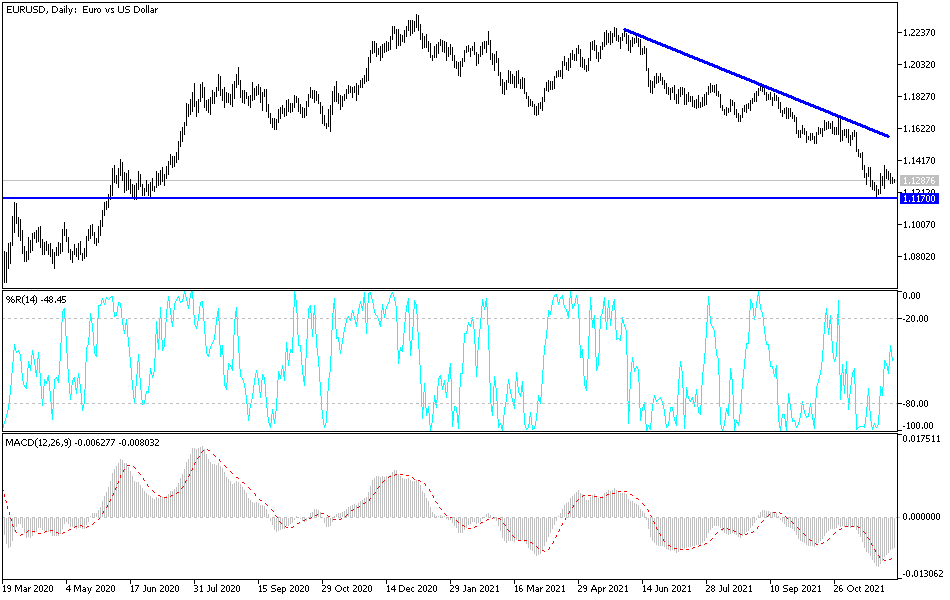As with last week, the EUR/USD settled around the 1.1266 support level. The euro is still weak amid the European countries' renewed demand for lockdowns, which add to the suffering of the Eurozone economy.
There are no major reports due from the Eurozone this week, so the release of the ZEW Survey of Economic Sentiment could be a catalyst. Readings from Germany and the entire region anticipate a decrease in optimism, which could be bearish for the EUR. After that, the US will release its CPI numbers, and dips in price pressures are also in focus. The headline reading could drop from 0.9% to 0.7% while the core reading could drop from 0.6% to 0.5%. Weaker-than-expected results could undermine the Fed's toughened hopes for mid-2022, which could affect the US currency. On the other hand, strong data could increase the attractiveness of the US dollar, which can already benefit from safe haven flows these days.
The EUR/USD pair had previously slipped to new 2021 lows under the 1.12 figure before the discovery of the latest mutant strain of the coronavirus that ignited a fire in assets and risk currencies in late November, triggering a wave of automatic demand for lower funding coins. Commenting on this, Tim Riddell, macro strategist at Westpac in London says, “Omicron caused a sharp unwinding of its FX financing deals which included shorts in both the yen and the euro. This was even more prominent against risk-correlated currencies, such as the Australian dollar.”
“EUR/USD may face another temporary pressure towards 1.14, but our tendency will be to retest the 1.1200 support, if not towards the 1.1000-50 region, before the ECB meeting,” Riedel and colleagues wrote in a research briefing last Thursday.
With the euro being sold heavily earlier in the year by investors seeking to fund bets on higher-yielding currencies or simply those who offer higher yield opportunities for other reasons, it was the first and most important benefit of investors as investors began to take risk off the table in late November. While these global market factors were instrumental in saving the euro from moving continuously below the 1.12 support, they were not the only drivers of the euro's recent performance, as last week's Eurozone inflation numbers seem to have had some impact.
Technical Analysis
The EUR/USD formed lower tops linked to a descending trend line that has been steady since June of this year. There may be another decline to this resistance level. The Fibonacci retracement tool shows that the 61.8% level is close to the trend line around the 1.1500 key psychological mark. The price is already testing the 38.2% Fibonacci resistance at 1.1374 while the 50% Fibonacci close at 1.1439.
So far the 100 SMA is still below the 200 SMA to confirm that the general trend has turned bearish and that the downtrend is more likely to resume than reverse. The gap between the indicators is widening to reflect increased selling pressure. However, the RSI is only moving higher to show that buyers can come back from here and have plenty of room to push the EUR/USD higher. The stochastic is also halfway up towards an overbought area, so buyers can take control for a longer period.
If any of the Fibonacci levels hold as resistance, the EURUSD may resume sliding to the swing low around 1.1163 or lower.


